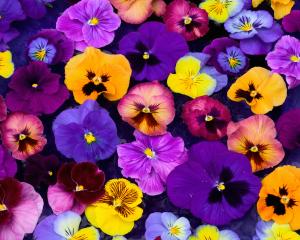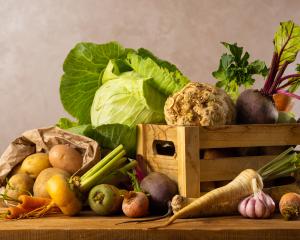Startled by the click of my camera, a New Holland honeyeater flicks its tail and flies off a railing at Inverawe, then settles to some serious foraging in a patch of Correa reflexa a few metres away.
The honeyeater is one of more than 80 bird species - 12 of them endemic to Tasmania, and some quite rare - that have been spotted at Inverawe, at Margate, just south of Hobart.
Having decided to move to Tasmania from Sydney almost 10 years ago, Margaret and Bill Chestnut "looked for a five-acre [2ha] block with a view to grow vegetables as a retirement project".
What they bought had splendid views but it was almost four times bigger than they planned and the 9ha property was overrun with blackberries, broom, boneseed and other weeds that were choking the handful of native plants surviving on the sloping cattle pasture.
Out went the cattle and barbed-wire fence, and in went Margaret and Bill, working outwards from the house in a venture that would have daunted most people, including Bill who on one occasion told his wife they would never turn it into a garden.
Only now do they have the odd moment to admire the view across North West Bay to the Tinderbox Hills. Those hills, says Margaret, are not named because of the likelihood of bush fires in a dry year but because an 18th-century French explorer left his tinderbox somewhere in the hills.
"We've done lots of research on early explorers and botanists," she says, adding that nearby Bruny Island should really be Bruni, as it was named after the navigator Antoine Raymond Joseph de Bruni d'Entrecasteaux (1739-1793), who explored the Australian coast in 1792 while seeking traces of the lost expedition of fellow Frenchman La Pérouse, which vanished about 1788. Signboards in the garden give some of the history of exploration of the area, as well as botanical information.
In creating the garden, the Chestnuts moved from their plan to grow vegetables - they still don't - to creating a native garden, one displaying as many Tasmanian plants as possible, partly because they love them.
"It's also to show people they can have colour all year round from natives," Margaret says.
More than 7000 plants, about 80% of them Tasmanian natives, have replaced the blackberries. One from the mainland is nicknamed Nobby. A small tree protected by netting wire, Nobby is a Wollemi pine (Wollemia nobilis), he hails from New South Wales, where a small stand of the tree was found in 1994 in a remote canyon. The trees, believed extinct for millions of years, are related to our kauri (Agathis australis).
Apart from the hard slog, clearing has had some unexpected outcomes. By falling through the foliage that screened it, Bill discovered a World War 2 tank trap, a reminder of how seriously Tasmanians regarded the likelihood of a Japanese invasion.
In winter at Inverawe, Australian fuchsia (Correa species) and grevilleas provide food for the birds before the banksias come into flower. A rich source of nectar, banksias do well on the aptly named Rabbit Hill, despite being somewhat fussy.
Then there are the acacias - tall silver wattles (Acacia dealbata) that survived the rough conditions before the Chestnuts came, blackwood (Acacia melanoxylon) with little lemon-yellow puffball blooms, and other smaller varieties.
Some wattles are extremely high in tannin and their bark was exported from Tasmania in the 19th and early 20th century for use in tanning leather.
The varied terrain, from hill to swamp, and soil that is sandy in some spots, clay in others, enables the Chestnuts to present a variety of Australian plants to visitors, avian and human. And one day, Margaret and Bill say, they will have a vege plot.
SEE IT
• Inverawe, 1565 Channel Highway, Margate, Tasmania, is open daily, from September 1 to May 31, 9am until sunset. Entry is $A12 and tea on the terrace is an extra $A6. Directions and contact details can be found online at www.inverawe.com.au.
• For other Tasmanian gardens open to the public, see the Blooming Tasmania website at www.bloomingtasmania.com.












